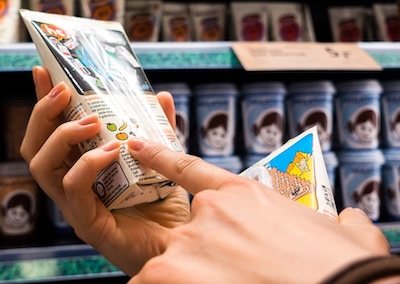Nutrition Advance, October 17, 2025
Excerpts from this article:
“While MSG is a salt, it is quite different from sodium chloride (table salt) in flavor and characteristics. Perhaps most notably, regular table salt contains approximately triple the sodium content of MSG.”
“MSG is made through a relatively simple process of fermenting either starch or sugar.”
“The food industry highly values MSG. We can find MSG or free glutamate—which has an identical ‘umami’ flavor—in a wide range of processed foods.”
“‘Free glutamate’ refers to the amino acid glutamate when it is no longer part of a whole protein structure. It is present in many foods, including aged cheese and mushrooms [also tomatoes], and it’s also in flavoring additives like yeast extract.” Free glutamate and MSG have the same taste and effect in the body.
 “While MSG requires labeling as monosodium glutamate or E621 [in Europe], free glutamate may appear as any of these ingredient names.”
“While MSG requires labeling as monosodium glutamate or E621 [in Europe], free glutamate may appear as any of these ingredient names.”
-Flavoring
-Flavor enhancer
-Glutamic acid
-Hydrolyzed protein
-Monosodium salt
-Natural flavor
-Textured protein
-Yeast extract
“Much historic concern over MSG has been due to speculation that the free glutamate it contains may cross the blood-brain barrier, leading to elevated glutamate levels in the brain, potentially causing neurological issues.
However, scientific research has shown that glutamate—whether from whole food sources or MSG—is metabolized in the gut. Notably, it does not cross the blood-brain barrier, and free glutamate levels in the brain do not increase.”
MSG May Encourage Greater Consumption of Healthy Foods
“One important point on diet and nutrition: some foods can be incredibly nutrient-rich, but they’re only beneficial if people will actually eat them.
“In this regard, people are more likely to regularly consume foods that they enjoy. According to the findings of a 2025 randomized controlled trial involving 60 participants, this is where MSG may potentially have benefits:
-There was a trend for consumers preferring the MSG-seasoned vegetables.
-Compared to the control group consuming vegetables with only table salt, the intervention groups consuming a mix of MSG and table salt either maintained or slightly increased their vegetable intake.”
For more details, including an informational video and links to studies about MSG’s safety, read the full article from Nutrition Advance.



